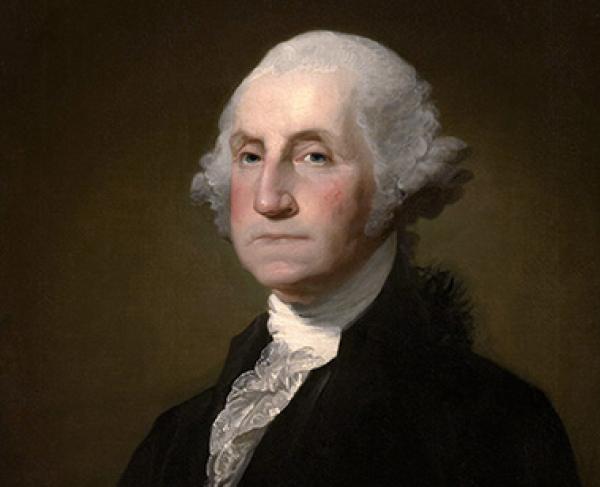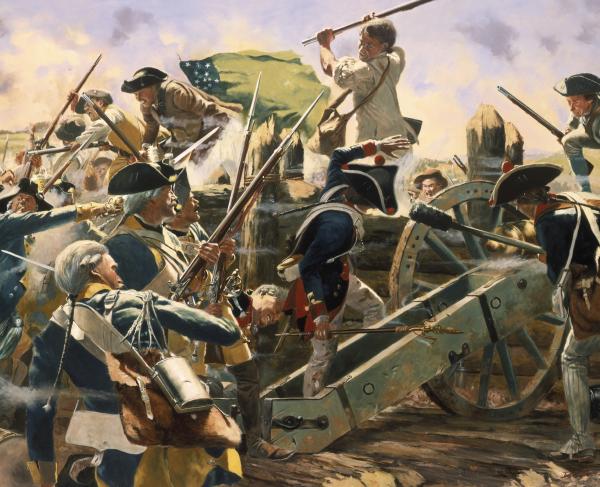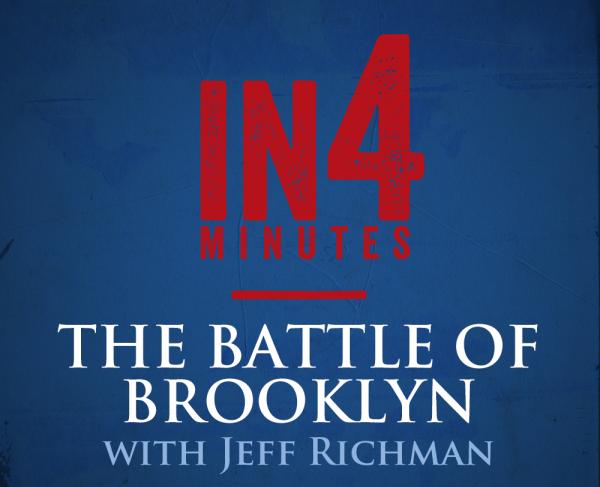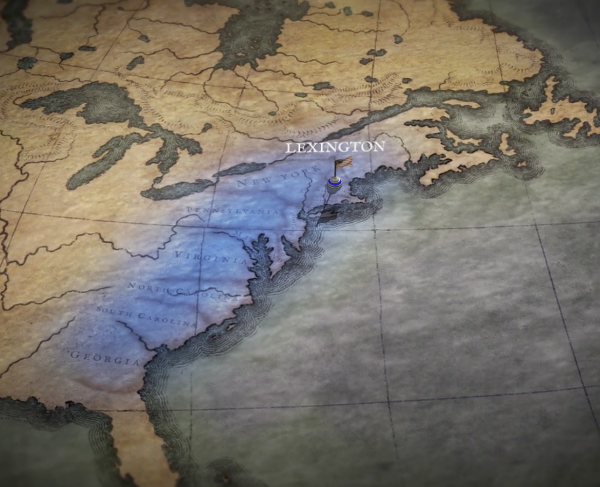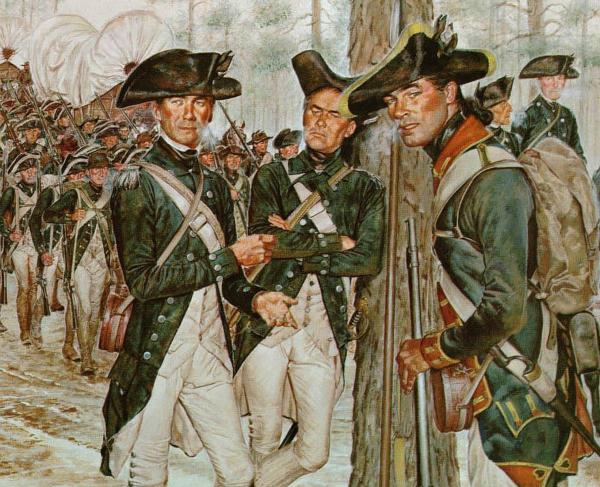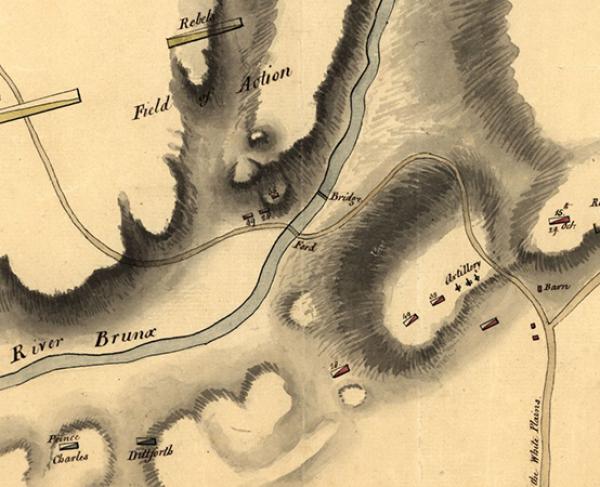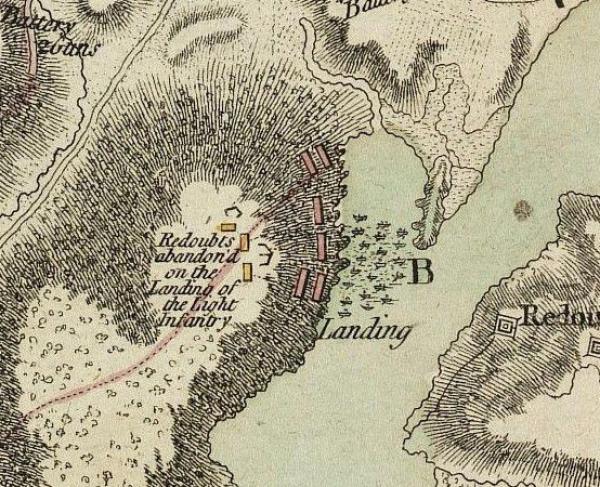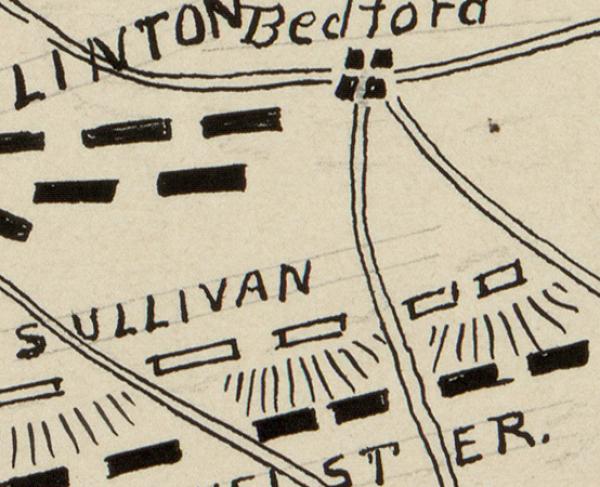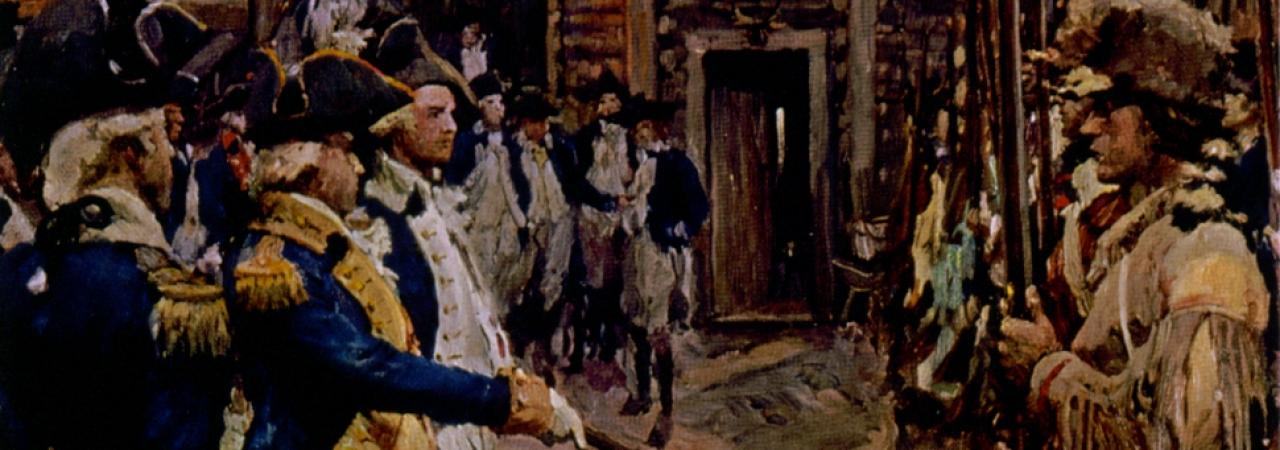
White Plains
New York | Oct 28, 1776
On October 28, 1776, George Washington’s Patriot army was attacked by British forces under the command of William Howe at the Battle of White Plains. In the resulting action, the Patriot force was defeated and forced to retreat from the field. Faced with the crippling defeats at White Plains followed by Forts Washington and Lee, Washington was forced to evacuate New York and New Jersey.
How It Ended
British Victory. After successfully pushing back British attacks up and down his fortified lines, George Washington's right flank broke when a Hessian force punched through the Patriot lines. This defeat caused Washington to retreat from the battlefield and evacuate New York.
In Context
After defeats in New York, General George Washington moved his defeated Patriot army to their base of supplies at White Plains, New York. However, British General William Howe was pursuing him, determined to defeat Washington once and for all.
After American defeats at the Battles of Long Island and Harlem Heights, General George Washington moved his army northwards in New York. The British pursued him doggedly by land and river. Skirmishes erupted almost daily as the Continentals marched just ahead of their British foes. British General William Howe hoped that if he could move his troops quickly enough, he could cut off Washington’s escape route near White Plains. By October 28, the Americans had reached their base of supplies at White Plains, New York. They fortified the town with a line of breastworks that some soldiers later claimed was composed primarily of cornstalks. The tired Americans did not have to wait long for their British adversaries to arrive on the scene.
On the morning of October 28, a sharp firefight erupted as American skirmishers tried to slow the British advance. The skirmishers eventually fell back to Chatterton Hill, a position on the main American line. Once the fighting began, the American fortified lines held against repeated British assaults. Eventually, Howe maneuvered his men to outflank and overwhelm the fortified American position. The British and Hessians soldiers launched one final desperate assault and were met by determined musketry as they climbed the slopes of Chatterton Hill. Finally, a Hessian force dislodged the militia that protected the American right flank despite their fierce resistance. The line began to unravel as more British soldiers rushed in to exploit the breakthrough. Soon, Washington's army was conducting a fighting withdrawal, with the 1st Delaware Regiment guarding the army's rear.
217
233
After his defeat, Washington was forced to retreat from New York and into New Jersey. The campaign was rough for Washington's soldiers, and after the string of losses, it seemed as if the Revolution was all but finished. However, since Washington and what remained of the Patriot army escaped, the war was not over.
After crushing Washington’s army in the Battles of Long Island and Harlem Heights, Howe planned to try and finish Washington’s retreating army once in for all. His goal was to try and attack Washington’s escape route at White Plains and hopefully end the rebellion. However, this did not work out as planned since the Patriot army successfully retreated from the area to fight another day.
During the Battle of White Plains, Hessian soldiers played a vital role in the fight's outcome. After repeated failed assaults on the American main lines, Hessian soldiers under the command of Johann Gottlieb Rall attacked the American right flank and British soldiers and successfully broke the American right flank, causing the entire line to buckle and retreat from the field.
White Plains: Featured Resources
All battles of the New York and New Jersey Campaign
Related Battles
3,100
7,500
217
233
